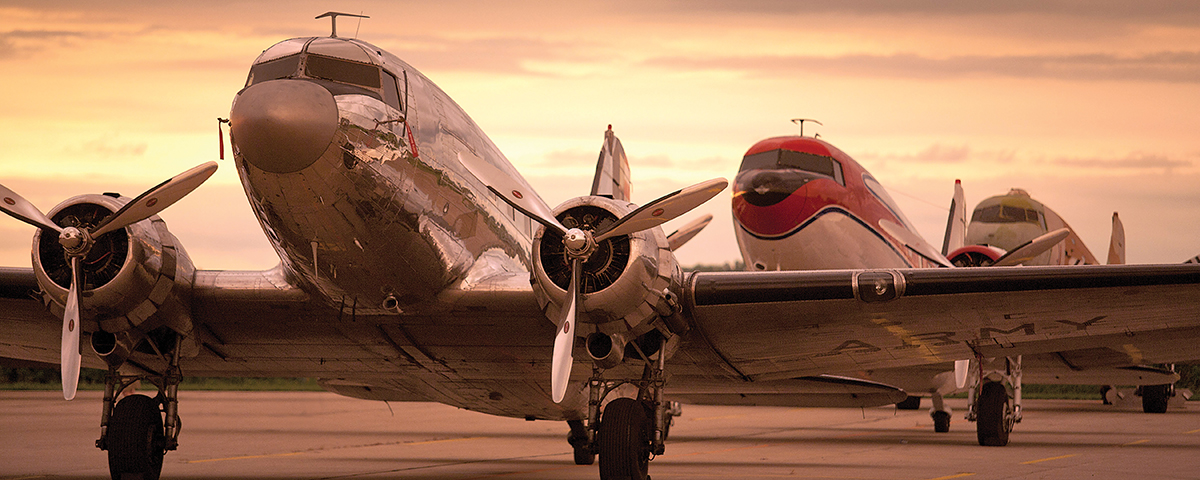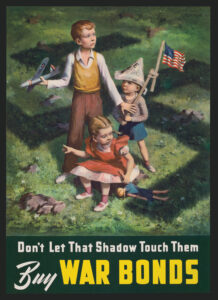Within a decade of its 1921 founding, the Douglas Aircraft Company had built a solid reputation. The design talent at the drafting tables and the vision of Donald W. Douglas meant that the company was poised for its biggest success ever.
Yet, by the early 1930s, the founder recognized the need to diversify his company’s product lines; the Depression raged and military budgets would be subject to drawdowns.
The Ford Tri-Motor was on the way out and intimations of the next generation of all-metal, multiengine passenger planes floated about the industry, with Boeing set to deliver its new 10-seat twin-engine Model 247 to United Air Lines. Not wanting to be left behind, Transcontinental & Western Air (later to become Trans World Airlines, or TWA) circulated a letter with specifications for an even higher-performing airliner. Dated August 2, 1932, and signed by Jack Frye, the airline’s vice president of operations, the letter went to a half dozen manufacturers, including Douglas, seeking their proposals.
In retrospect, Douglas described the letter as “the birth certificate of the modern airliner.” He convened his senior staff to ponder the question of whether to respond substantively. He weighed the mostly positive input and decided to submit a proposal for what became the first in the Douglas Commercial (“DC”) family of airliners.
Point man on the design was Arthur E. Raymond, a young engineer who had had a circuitous journey to his position at Douglas Aircraft. In 1921 Raymond graduated with honors from Harvard and then earned a master’s degree in aeronautical engineering at MIT. One day in 1925 he wandered into the Douglas facility—a converted movie studio in Santa Monica, Calif.—looking for work. Douglas was his company of choice, in large part because the year before, its hefty biplanes, the Douglas World Cruisers, had been the first aircraft to circumnavigate the globe in a highly publicized six-month U.S. Army expedition that originated at nearby Clover Field.
Raymond persisted day after day until the company offered him a manual laborer’s job on the shop floor. It was not exactly what he was looking for, but it would be a start at the company he had his heart set on.
Coincidentally, within a few weeks Douglas sent a letter to his old professor at MIT, Jerome Hunsaker, asking if he knew someone able to fill an open aerodynamics engineering slot. A telegram soon arrived advising that an ideal candidate, Arthur Raymond, was already at the company.
In short order, Raymond went from the shop floor to the engineering offices. Ten years later, after James H. “Dutch” Kindelberger vacated the top engineering post to head up North American Aviation, Raymond would become the company’s chief engineer as it ventured boldly into the civil aviation marketplace. “It was a lot of fun to work for Douglas in those days,” Raymond later wrote. “The DC-3 was virtually unchallenged, for we had such a head start that nobody else could catch up. We knew each other and our customers intimately. We were not overburdened by organization. But best of all, we were proud of our boss and felt that he was proud of us.”
According to Donald Douglas’ biographer, Wilbur H. Morrison, one reason for the success of the company was the founder’s “uncompromising standards.” In what today would qualify as a corporate mission statement, Douglas laid out his guiding principles via advertising copy distributed in 1921: “Those who know most of superfine quality and workmanship find the cost of quality a small item when measured in terms of satisfactory performance. Quality is the basic feature of all successful aircraft.”
Another reason for the company’s rise amid intense competition and challenging economic times could be traced to the founder’s relationships with his employees. Staying connected to the activities on the shop floor, maintaining the respect of machinists and welders by listening to them, being open to the ideas that might percolate from the hands-on assemblers remained unwavering constants through his tenure. About the early days when it was still possible for the founder to know his employees by name, Morrison wrote, “The atmosphere at the Douglas plant was so informal that, if one had a problem, he just went up to Douglas and told him about it.”
This culture of inviting employees to speak up and share their thoughts animated staff discussions on the design prompted by Jack Frye’s letter. The new airplane, to be designated the DC-1, would be an all-aluminum-alloy twin-engine configuration with a standup passenger cabin and retractable landing gear. The wing would draw on the taper in some of Jack Northrop’s recent cantilevered designs, and the center section would be an integral part of the fuselage, with outboard sections bolted on.
Raymond spent considerable time in TWA’s offices in both New York and Kansas City clarifying technical matters. The biggest question mark was the feasibility of single-engine flight at every segment of the airline’s cross-country route, especially at the highest elevation in New Mexico. The airline had incorporated single-engine operation into its specifications for safety’s sake.
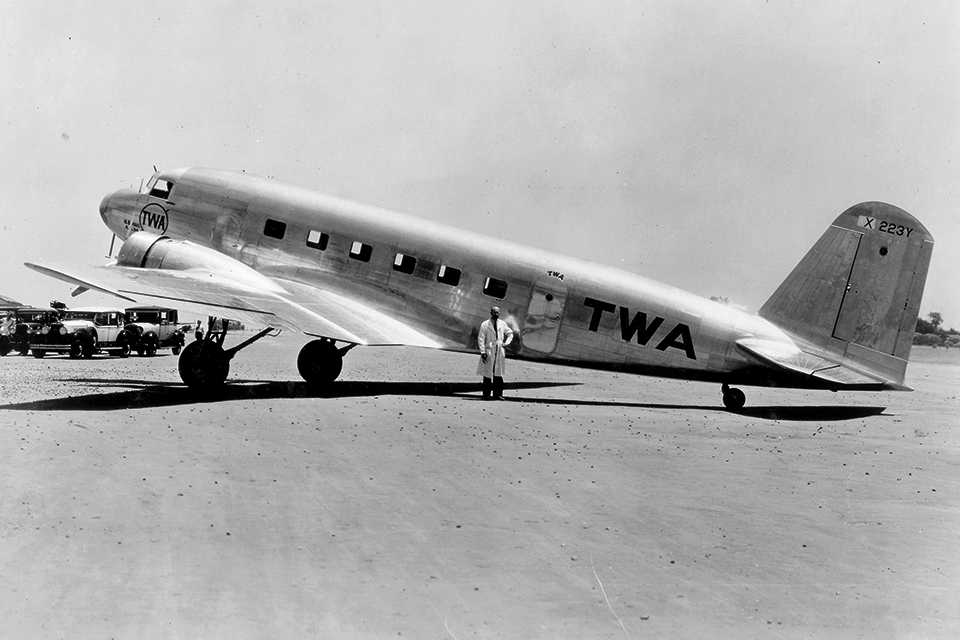
Tension ran high in long-distance phone conversations between Donald Douglas and Arthur Raymond as the latter attempted to assure the airline that the new design could satisfy the single-engine requirement over the mountainous American Southwest. But Douglas wanted to know, could it really? Raymond, who had been meeting in New York with Frye and Charles Lindbergh, the newly hired high-profile consultant to the airline, reportedly confided, “I sure did some fast slide ruling.” In the end, Raymond expressed “90 percent” certainty to his boss, who considered that level of confidence from his fellow engineer to be bankable.
During construction of the DC-1, Douglas decided to install new Wright Cyclone air-cooled engines with new three-bladed Hamilton-Standard variable-pitch propellers. The aircraft had a soundproofed and heated cabin. It was ready for its maiden flight on June 22, 1933, less than a year from contract signing.
In keeping with the founder’s regard for his employees’ morale, Douglas called for the flight test to occur at lunchtime, when the hundreds of plant workers could come out and watch their handiwork rise from the Clover Field runway. According to Morrison, before the flight Douglas asked his chief test pilot, Carl Cover, if the plane was ready. A smiling Cover said, “She’s born to fly, and belongs up there with the angels.” When the DC-1 lifted off, Douglas had to turn away from Raymond to hide his tears.
The euphoria quickly turned to alarm. Every time the new airliner tried to climb, its engines quit. But when it pointed down, they came back to life. Cover skillfully returned to the airport and subsequent inspection revealed that the carburetors had been installed backwards. The problem was fixed and the DC-1 continued its flight test program, which revealed the need for more tail surface area.
Delivered to TWA in December 1933, the DC-1 raised the bar for commercial air transportation. But it was obvious to both the manufacturer and the airline that this airplane, great as it was, could be made even better. A lengthened fuselage would add seats to generate additional passenger revenue. Work soon began on the enlarged airliner, the DC-2. It would have 14 seats (two more than the DC-1), an automated landing gear system, power brakes and improved instrumentation, including an autopilot. Initially TWA committed to 25 DC-2s. The first was delivered on May 14, 1934.
Two and a half months later, TWA entered DC-2s in its transcontinental service with one named Sky Chief. It left the East Coast in the late afternoon and arrived on the West Coast the next morning, with three stops along the way. New long-distance speed records were set.
The DC-2 was deemed the greatest aviation achievement of the year, and Donald Douglas received the annual Robert J. Collier Trophy on behalf of his company’s workforce at a White House ceremony in 1935. That year, another airline executive contacted Douglas for an even bigger passenger plane. Cyrus R. Smith, the president of American Airlines, wanted to quickly update his fleet, which consisted of obsolescent Ford Tri-Motors and Curtiss Condors.
Smith believed that he had to outdo his competitors, TWA and United. They had recently converted to the DC-2 and the Boeing 247, respectively, so in Smith’s view American would need to offer its passengers something not yet available to the other airlines: sleeping berths in greater comfort and quantity than was possible in its Condors.
American’s engineering vice president, William Littlewood, had overseen preliminary design work for an enhanced DC-2 to accommodate the berths. Raymond was brought into the discussions and explored the idea’s viability. Things came to a head when Smith called Donald Douglas to advocate for the new airliner. Douglas was reluctant because the DC-2, at the time halfway through its production run, commanded so much of the company’s attention, and a new design with its associated tooling would be expensive.
Another factor in the eyes of the Old Man, as some now referred to the company’s founder, was the impracticality of sleeper planes. He believed berths would not be popular with passengers nor be as economical as seats. Nevertheless, Smith persisted in his phone call, which lasted a few hours.
Despite his reservations, Douglas consented to proceed with the DST (Douglas Sleeper Transport). In the end, only seven DSTs were delivered. Douglas’ intuition was right: Replacing the 14 double-wide seats that converted into sleeping berths with a seats-only configuration that accommodated 21 passengers proved more economical. Through this unpremeditated process, the legendary DC-3 was born. The aircraft dominated prewar commercial air traffic and became indispensable as a military transport during World War II.
Using the DC-2 as the basis for the DST, the new plane was slightly more than 30 inches longer and 26 inches wider. It was ready for its first airborne trek on December 17, 1935, the 32nd anniversary of the Wright brothers’ famous first flight.
The press was not called out to the airport, nor did the company’s executives bother to stop work and observe the takeoff. The Santa Monica plant was humming right along and the new plane was seen then as an extrapolation of the existing string of airliners. Even the flight crew, led by Carl Cover, considered the initial test hop to be nothing special. The people hatching this soon-to-be-dominant transport were simply too close to the trees to see the forest. The DST rose from Clover Field at 3 p.m. and returned after an hour and a half of uneventful flying, indicative of the quiet excellence that would characterize countless flights of the workhorse in the years to come.
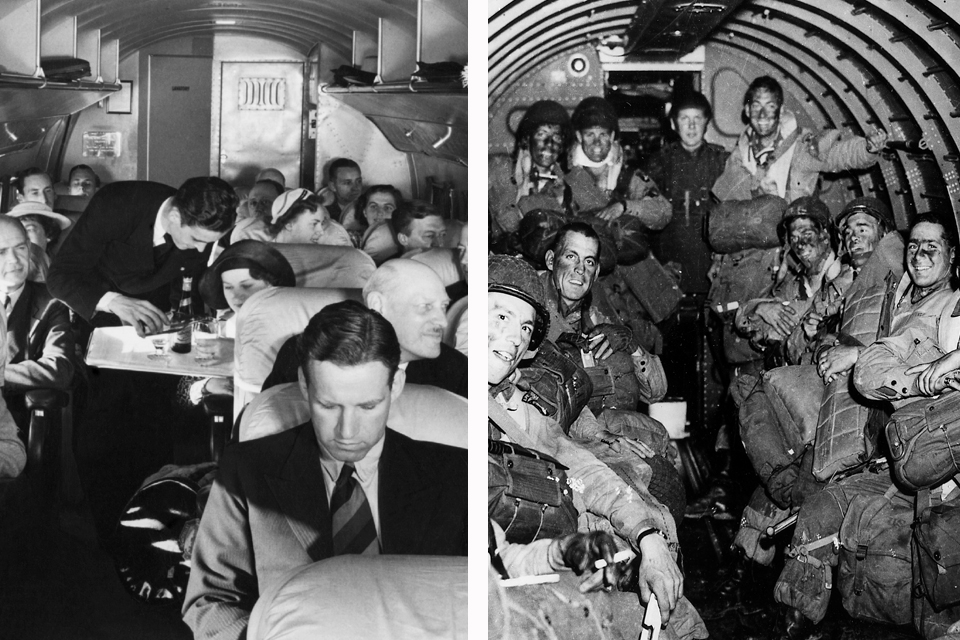
Nine months later, on September 18, 1936, the DST initiated the upgraded American Airlines Skysleeper service. Although the DST was soon superseded by the DC-3, both configurations upped cruise speed to 200 mph, which when combined with the aircraft’s range made transcontinental flight possible with just two stops. The miracle of the evolved Douglas design was that it could carry a third more payload than any other competing airliner for half the operating cost.
The DC-3 became the first profitable passenger-carrying airliner, not reliant on mail contracts to pay its way. Among domestic carriers, the next to buy the DC-3 after American Airlines were Eastern and United in 1937, followed by TWA and Western in 1938. Many others, including Braniff, Northwest, Pennsylvania Central and Delta, added the type to their fleets before America’s entry into WWII.
Within three years of its introduction, the DC-3 accounted for 95 percent of all commercial air traffic in the U.S. From commencement of service to the Japanese attack on Pearl Harbor, the DC-3 increased domestic revenue passenger miles more than fivefold. Of the 322 aircraft operated by the country’s airlines in December 1941, 260 were DC-3s.
At the prewar peak, 30 foreign airlines operated the DC-3. On the eve of war, the plane’s scheduled flights represented 90 percent of international air traffic. Interestingly, the first foreign airline to buy the DC-3 was KLM, the Dutch company that had entered a DC-2 in the London-to-Melbourne MacRobertson air race.
The U.S. Army Air Corps had a keen interest in the Douglas airliner’s potential as a troop transport and cargo plane. The trouble was sluggish funding in the prewar years, given the country’s isolationist temperament.
During DC-2 production, the Air Corps bought small numbers of the type and modified them under the designations C-33 and C-39. The first DC-3 variant for the Air Corps was delivered in 1939 and decked out in classic prewar markings. Designated the C-41A and configured for command transport, it was initially assigned for the use of Secretary of War Henry Stimson. The aircraft had 1,200-hp, 14-cylinder Pratt & Whitney R-1830 Twin Wasp engines, an upgrade from the DC-3’s 1,000-hp nine-cylinder Wright Cyclone SGR-1820 engines. Other modifications included military instruments and communications equipment.
Orders picked up in 1940 and again in 1941. The Army issued contracts for the C-47 and C-47A, which had a two-panel cargo door on the port side of the fuselage and a reinforced floor. Wingspan was lengthened by six inches and an astrodome was installed behind the flight deck for navigation purposes. The Army named its new transport the Skytrain, but more often it was called the “Gooney Bird.”
The crew typically consisted of a pilot, copilot and radio operator. Payload could be up to 6,000 pounds of cargo or 28 fully equipped paratroopers on folding canvas seats. It was also possible to outfit the transport as a flying ambulance with 14 stretchers and positions for three medical attendants.
Over half the total military variants were C-47As built at new Douglas plants in Long Beach and Oklahoma City. The aircraft designation generally included the suffix “DL” or “DK,” denoting the production venue as the Long Beach plant or the Oklahoma City plant, respectively.
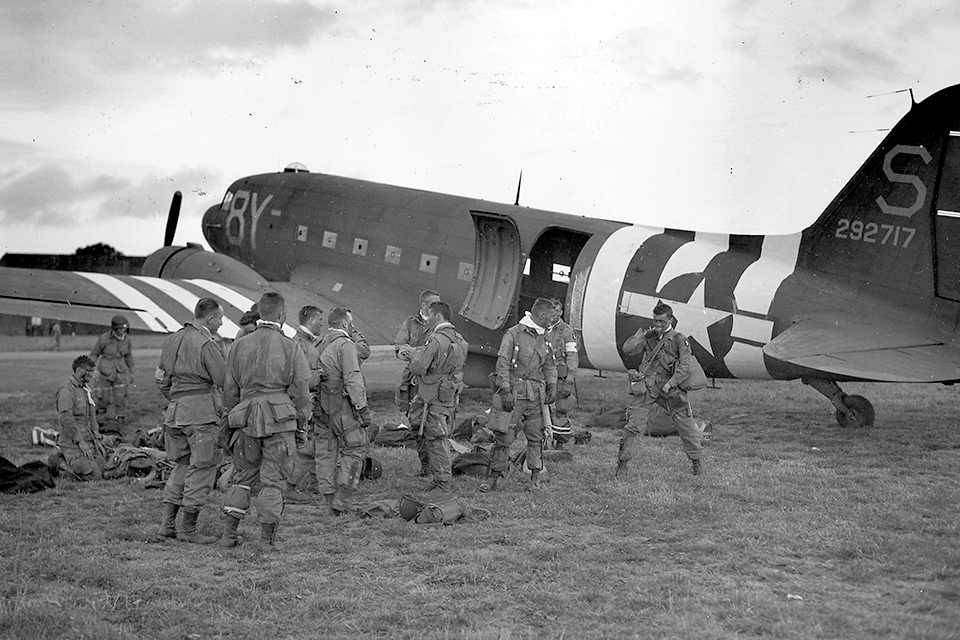
The C-47B was tweaked for high-altitude operations, most notably for missions over “the Hump” in the China-Burma-India Theater. A number of these transports, redesignated C-47Ds, saw continued military service into the 1960s, first as navigational systems testing aircraft and then as gunships. The AC-47D gunship model, outfitted with three 7.62mm miniguns on the port side, gained notoriety during the Vietnam War as “Puff the Magic Dragon.”
Another variant, the C-53 Skytrooper, was made to haul up to 28 people in fixed metal seats and to tow a troop- or weapons-carrying glider. The last DC-3 derivative built for the Army Air Forces was the C-117A, a staff transport that accommodated 21 passengers in a civilian-style seating arrangement. The U.S. Navy and Marine Corps operated more than 500 DC-3 derivatives under the designation R4D in a variety of roles, including personnel/staff transport, polar operations, radar countermeasures, air-sea warfare training and navigation training.
Before production could be ramped up to meet the military’s needs in WWII, the Army impressed into service about a third of the domestic civilian DC-3 fleet. These were generally leased from the airlines, but not in all cases. Each of these civilian airliners was given a distinct Army designation from C-48 to C-68, based on the Douglas specification number, adding immensely to the “alphabet soup” of the DC-3 derivatives used by the military.
The British Royal Air Force, Royal Canadian Air Force and Royal Australian Air Force operated DC-3 derivatives during WWII. These Commonwealth air forces uniformly referred to the aircraft as the Dakota.
The Soviets obtained manufacturing rights from Douglas before WWII. Production began in Moscow and continued in Tashkent during the war. The original Soviet designation of PS-84 was changed to Lisunov Li-2. It is not clear how many of these were built, but estimates range from 2,000 to nearly 5,000.
In an extreme case of unintended consequences, manufacturing rights were also bequeathed before the war to Japan. Showa Hikoki Kogyo assembled 416 for the Japanese navy, designated L2Ds. Nakajima Hikoki built another 71. The 487 DC-3 derivatives served as the Japanese navy’s standard wartime transport, known to the Allies by its code name, Tabby. Regrettably, the extensive use of the type in the Pacific theater led to instances of misidentification among the Allies, with sometimes fatal results.
Altogether, Douglas Aircraft built 10,654 civilian DC-3s and their military variants. Aftermarket modifications have included luxury interiors for corporate conversions and turboprop upgrades to increase the plane’s freight capacity.
The talented and close-knit Douglas engineers who conceived the DC-3 amid the Depression had no way of knowing that their creation in modified form would become the most ubiquitous Allied transport of the war. The aircraft served in all theaters, providing timely delivery of men and materiel. Arguably, its finest hour came on June 6, 1944, when more than a thousand C-47s and related variants participated in D-Day operations, dropping paratroopers and towing troop-laden gliders into battle. After the war, General Dwight Eisenhower, the supreme Allied commander, said that the majority of senior officers under his command considered the militarized version of the DC-3 to be one of four pieces of equipment most important to winning the war in Africa and Europe. The others were the bulldozer, the jeep, and the two-and-a-half-ton truck. Eisenhower went on to note, “Curiously, none of these is designed for combat.”
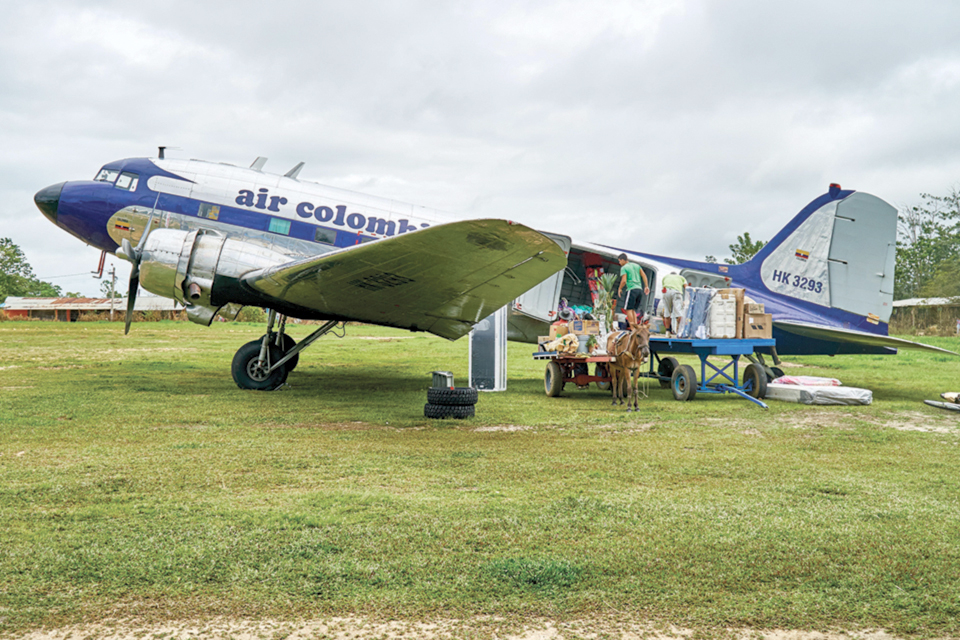
The DC-3 won’t die. Of the roughly 400 still being flown worldwide, some carry skydivers, others fly tourists to remote locales, a few still deliver freight, while yet more are flyable museum pieces dropping in at airshows to share the type’s rich history.
The DC-3 has outlasted most of the airliners and cargo planes that entered service after it started plying routes for American Airlines in 1936. That longevity speaks volumes about its efficiency and durability. Rarely is an airplane at once a utilitarian and aesthetic success, but Donald Douglas and his colleagues managed to pull it off with this fine-tuned machine.
Contributing editor Walter J. Boyne and Philip Handleman are the authors of The 25 Most Influential Aircraft of All Time, from which this article is excerpted. Copyright ©2018 by Walter J. Boyne and Philip Handleman. Used by permission of Globe Pequot (rowman.com).

